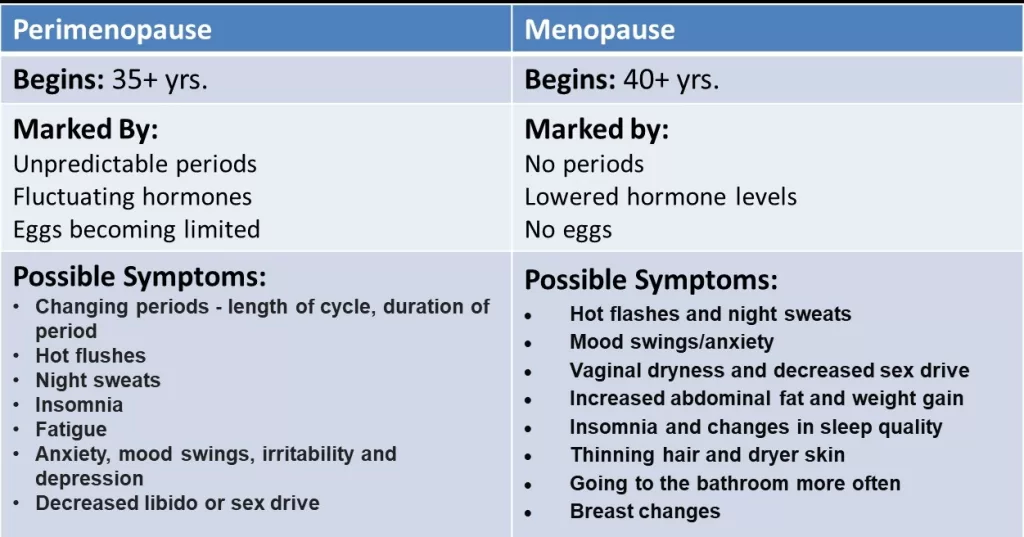
Perimenopause: The Unsung Heroine of Menopause
For several years, menopause has garnered significant attention as a pivotal stage in a woman’s life, signifying the conclusion of her reproductive capabilities. Nevertheless, it is essential to acknowledge another pivotal phase that is sometimes disregarded: perimenopause. The premenopausal phase, which normally lasts over a number of years, is marked by a steady decrease in the levels of estrogen and progesterone hormones. This hormonal drop gives rise to a variety of physical and emotional symptoms.
Traditionally, perimenopause has been surrounded by an aura of mystery, whereby women have often found themselves grappling with its intricacies without sufficient advice or assistance. Nevertheless, there is a shift occurring. The increased recognition and availability of in-home testing options have contributed to a heightened knowledge and acknowledgment of perimenopause, thereby giving it the appropriate level of attention it warrants.
Perimenopause Tests: Shedding Light on Hormone Imbalances
Perimenopause tests are of significant importance in elucidating this sometimes misunderstood period. Through the analysis of hormone levels and several biomarkers, these tests provide significant insights into the fundamental factors contributing to perimenopausal symptoms, therefore enabling women to assert agency over their own health.
One of the often-used diagnostic methods for perimenopause involves assessing the concentrations of follicle-stimulating hormone (FSH) and luteinizing hormone (LH). As the levels of estrogen decrease, there is an increase in follicle-stimulating hormone (FSH) levels, but luteinizing hormone (LH) levels exhibit irregular fluctuations. The presence of a hormonal imbalance is linked to the occurrence of irregular menstrual cycles, hot flashes, and sleep difficulties, which are often seen as indicators of perimenopause.

#Perimenopause: The Social Media Sensation
The increasing recognition of perimenopause extends beyond the realm of medical discourse and is also gaining traction within social media platforms. The hashtag #perimenopause has accumulated more than 820 million views on TikTok, indicating a significant level of public interest in comprehending and effectively navigating this particular stage of the human life cycle.
The prevalence of social media activity has presented enterprises with a favorable circumstance to exploit the growing need for perimenopause diagnostic options. A number of emerging entrepreneurs have introduced perimenopause test kits designed for use at home, therefore allowing women a practical and easily accessible means of evaluating their hormone levels.
At-Home Lab Testing: A Revolution in Healthcare
The inclusion of perimenopause tests within the realm of at-home lab testing reflects a larger phenomenon that has significantly transformed individuals’ approach to managing their well-being. The tendency of people to seek methods to maintain their health while minimizing exposure to avoidable dangers was expedited by the COVID-19 pandemic.
Currently, there exists a diverse array of laboratory tests that may be conducted in the comfort of one’s own home. These tests include a broad spectrum of medical examinations, including but not limited to blood tests, screens for sexually transmitted infections (STIs), as well as assessments for vitamin levels and dietary intolerances. The increased accessibility of health information has provided people with the ability to assume responsibility for their own well-being, enabling them to make well-informed choices by using tailored data.

The Future of At-Home Lab Testing: A market valued at $2 billion
The market for at-home lab testing is anticipated to have a valuation of $2 billion by the year 2025, indicating an increasing need for healthcare solutions that are easy and easily accessible. The expansion of this phenomenon may be attributed to the progress in technology, which has facilitated the process of gathering and examining samples from the convenience of one’s own residence.
An example of a very efficacious instance of in-home laboratory examinations is a food intolerance testing kit that is readily accessible for purchase on the online retail platform, Amazon. The monthly income generated by this product amounts to around $91,000, indicating the market segment’s commercial feasibility.
Conclusion: Empowering Women Through Perimenopause Awareness
The availability of perimenopause tests, in conjunction with the wider prevalence of at-home lab testing, is enabling women to assume agency over their health and overall welfare during the period of perimenopause. These tests are assisting women in making well-informed choices on the management of their health by offering useful insights into hormonal imbalances and other underlying causes.
With the increasing knowledge and improved accessibility, perimenopause is now receiving the attention it deserves as a significant phase in a woman’s life. However, there is growing recognition of its importance as a noteworthy stage that warrants attention and assistance. By using advanced testing methodologies, women are empowered to effectively manage the hormonal fluctuations they experience, so enhancing their confidence and understanding. This enables a more seamless transition into the subsequent phase of their life journey.















